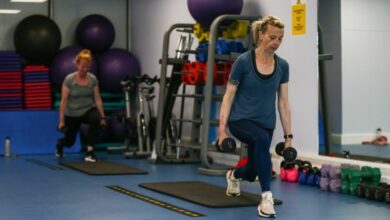
New research which looked at MRI scans of runners brains suggests that those who run have greater functional connectivity in the brain than those who don’t.
Carried out by researchers from the University of Arizona, the small-scale study look at the brains of 11 young adult cross-country runners and 11 sedentary control participants.
All adults were between 18 and 25 years old, with the team choosing a younger population of adults for their study as most research within the past 15 years has focused on the effect of exercise on the brain only in older adults.
“This question of what’s occurring in the brain at younger ages hasn’t really been explored in much depth, and it’s important,” explained the university’s running expert David Raichlen, “Not only are we interested in what’s going on in the brains of young adults, but we know that there are things that you do across your lifespan that can impact what happens as you age, so it’s important to understand what’s happening in the brain at these younger ages.”
All participants underwent MRI scans which measured resting state functional connectivity, which is what is happening in the brain while participants are awake but at rest and not engaging in any specific task.
The scans showed that overall, the runners showed greater functional connectivity – or connections between different brain regions – within several areas of the brain.
One of these areas was the frontal cortex, which is important for cognitive functions such as planning, decision-making and the ability to switch attention between tasks.
New research which looked at MRI scans of runners brains suggests that those who run have greater functional connectivity in the brain than those who don’t.
Carried out by researchers from the University of Arizona, the small-scale study look at the brains of 11 young adult cross-country runners and 11 sedentary control participants.
All adults were between 18 and 25 years old, with the team choosing a younger population of adults for their study as most research within the past 15 years has focused on the effect of exercise on the brain only in older adults.
“This question of what’s occurring in the brain at younger ages hasn’t really been explored in much depth, and it’s important,” explained the university’s running expert David Raichlen, “Not only are we interested in what’s going on in the brains of young adults, but we know that there are things that you do across your lifespan that can impact what happens as you age, so it’s important to understand what’s happening in the brain at these younger ages.”
All participants underwent MRI scans which measured resting state functional connectivity, which is what is happening in the brain while participants are awake but at rest and not engaging in any specific task.
The scans showed that overall, the runners showed greater functional connectivity – or connections between different brain regions – within several areas of the brain.
One of these areas was the frontal cortex, which is important for cognitive functions such as planning, decision-making and the ability to switch attention between tasks.
University of Arizona psychology professor Gene Alexander commented on the results saying, “One of the key questions that these results raise is whether what we’re seeing in young adults – in terms of the connectivity differences – imparts some benefit later in life.”
“The areas of the brain where we saw more connectivity in runners are also the areas that are impacted as we age, so it really raises the question of whether being active as a young adult could be potentially beneficial and perhaps afford some resilience against the effects of aging an d disease.”
The results can be found published online in the journal Frontiers In Human Neuroscience.




